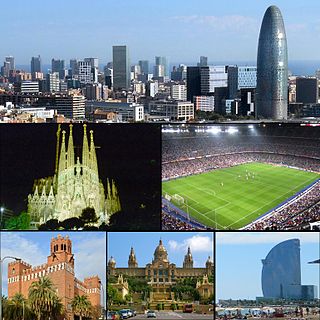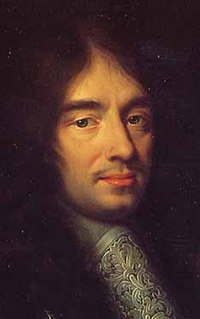
Josep Puig i Cadafalch was a Catalan Spanish Modernista architect who designed many significant buildings in Barcelona. He was the architect of the Casa Martí, which became a place of ideas, projects and social gatherings for such well-known Catalans as Santiago Rusiñol and Ramon Casas.

Fernando Tarrida del Mármol was a mathematics professor born in Cuba and raised in Catalonia best known for proposing "anarchism without adjectives", the idea that anarchists should set aside their debates over the most preferable economic systems and acknowledge their commonality in ultimate aims.
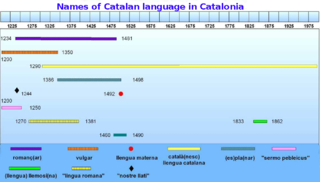
The first names, or glossonyms, of the Catalan language formed in a dialectal relation with Latin, in which Catalan existed as a variety. These names already expressed the relationship between the two languages. New names that related Catalan to Rome came about to dignify the Catalan language in the thirteenth century, though Latinists called it vulgar and the people planus, or pla.
La fi del comte d'Urgell or Scriptura privada is an anonymous Catalan political tract written during the Catalan Civil War (1462–72) by an enemy of king John II. Largely composed of personal stories, including that of the death of James II of Urgell, whose right to the throne is championed. The decadence of the great noble families who supported Ferdinand of Antequera in the Compromise of Caspe is portrayed as a divine curse on them. The earliest known manuscript of La fi dates from 1598 and its editor, Xavier de Salas Bosch (1931), considers it a sixteenth-century work, though most commentators prefer a fifteenth-century provenance, some suggesting as early as 1410–33.

Catalan originated from Vulgar Latin in the Pyrenees Mountains between France and Spain. It diverged from the other Romance languages in the 9th century. At that time, Catalan spread quickly throughout the Iberian peninsula when the Catalan counts conquered Muslim territory. By the 11th century, the Catalan language was present in several feudal documents. Catalan was present throughout the Mediterranean by the 15th century. This was during a time when the city of Valencia was thriving.

Vilallonga del Camp is a municipality in the Province of Tarragona, Catalonia, Spain. According to 2009 its population was 1,889 inhabitants. Vilallonga del Camp is the only village within the municipality. It is located north of the provincial capital of Tarragona, roughly 12 miles from the coast. It lies along the A-27 road, north of El Morell and La Pobla de Mafumet, near El Rourell, just to the northeast. Heavily surrounded by fields full of crops, the municipality's main economic activity is agriculture; mainly hazelnuts, grapes, almonds, olive and carob trees.

Montornès del Vallès is a municipality in the province of Barcelona and autonomous community of Catalonia, Spain. The municipality covers an area of 10.2 square kilometres (3.9 sq mi) and the population in 2014 was 16,217.
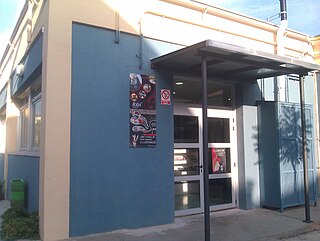
The Escola de la Llotja, officially the Escola d'Arts i Oficis de Barcelona, is an art and design school located in Barcelona, Catalonia, Spain. The school took its name from its initial location in the Llotja de Mar palace; it was moved in 1967 to its current location at 17 Ciutat de Balaguer Street. The first director of the school was Valencian engraver Pedro Pascual Moles, who oriented the school towards academic art advocated by painter Anton Raphael Mengs.

Josep Maria Nadal i Farreras is Professor of History of Language at the University of Girona.
The Museum of Montserrat showcases a selection of the most outstanding artistic and archaeological heritage at the thousand-year-old Abbey of Montserrat. The museum contains six very different collections. More than 1.300 pieces are exhibited in the museum, embracing a vast chronological period.
Pere Puig Subinyà was a Catalan politician and businessman. He was a member of Unió de Rabassaires and Republican Left of Catalonia

Sant Sebastià del Sull is a ruined Benedictine monastery in Saldes, Berguedà comarca, Catalonia, Spain. Originally constructed in the 9th century in Romanesque style, the building was renovated several times. After it collapsed, it was rebuilt in the 15th century. Now in ruins, Dr. Manuel Riu Riu, made several excavations between 1971–77, which served to expose unique building architecture and important Catalan Romanesque necropolis.

Sant Pere de les Puelles is a Benedictine monastery in the Sant Pere, Santa Caterina i la Ribera neighborhood of the Ciutat Vella district of Barcelona, Catalonia, Spain. The 10th-century building, Romanesque/Gothic in style, was declared a Bien de Interés Cultural landmark in 1931.
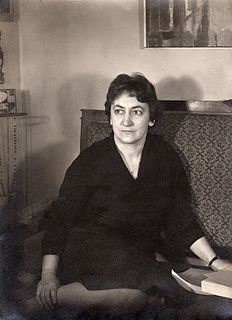
Maria Aurelia Capmany i Farnés was a Catalan novelist, playwright and essayist of Catalan descent. She was also a prominent feminist cultural and anti-Franco activist.
La Dona Catalana was a Catalan language home and fashion magazine. It was published by Editorial Bosch in Barcelona between 1925 and 1938. Starting on 9 October 1925, the weekly periodical came out every Friday, although there was some sporadic irregularity. It was founded by a pioneer of Catalan cinema, Magi Murià. He came from a working-class family whose social status was modest, but he learned French, film and journalism on his own. His daughter, the writer Anna Murià, wrote her first article for the magazine using the pseudonym "Roser Català"; even her father did not know who was the author of that article. A total of 681 issues were published. La Dona Catalana's last issue occurred on 16 December 1938, when Franco's troops began the Catalonia Offensive.
Núria Albó i Corrons is a Spanish writer, teacher, and politician. She is a Creu de Sant Jordi and Premi Vila de'Arenys laureate.
Joan Bastardas i Parera was a Catalan Latinist and Romance philologist, the son of the lawyer and politician Albert Bastardas i Sampere. He studied at the University of Barcelona, with Marià Bassols de Climent, and wrote a PhD dissertation on Medieval Latin syntax, for which he received the Antonio de Nebrija Prize (1951). He was also indirectly a student of the Swedish Latinist Dag Norberg.
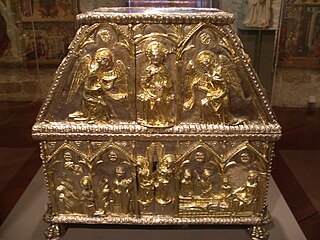
The casket of Sant Cugat is a reliquary of gold from the beginning of the fourteenth century. It is made with embossed silver plates engraved and partly superimposed on a golden casket of wood, depicting scenes from the life and death of the martyr Saint Cugat. Its makers were Joan de Gènova and Arnau Campredon. During the seventeenth century, it was dismantled and built in a smaller size in which the plates were reused from the previous silver.
Maria Verger Ventayol (1892–1983) was a Spanish archivist, librarian, and poet in Catalan and Spanish.
Francesca Vendrell i Gallostra was a Medieval historian and Professor of Latin, Spanish and Literature.
